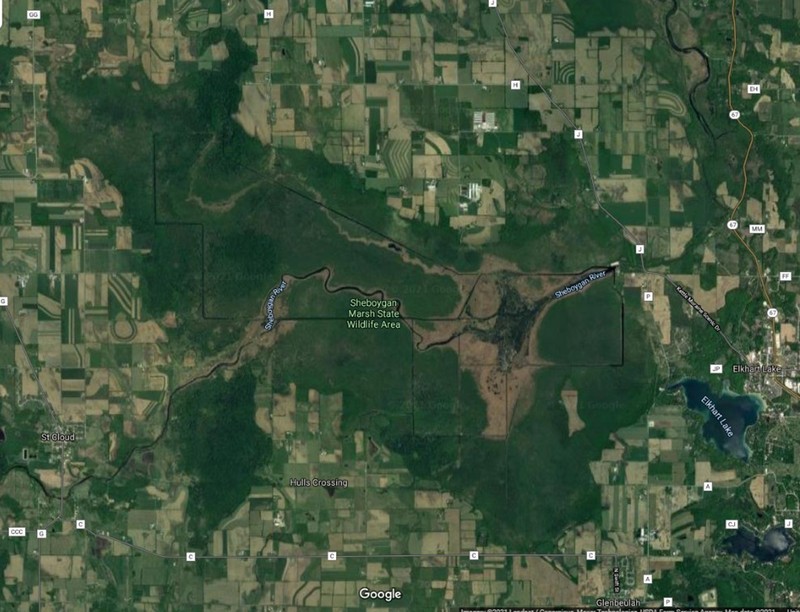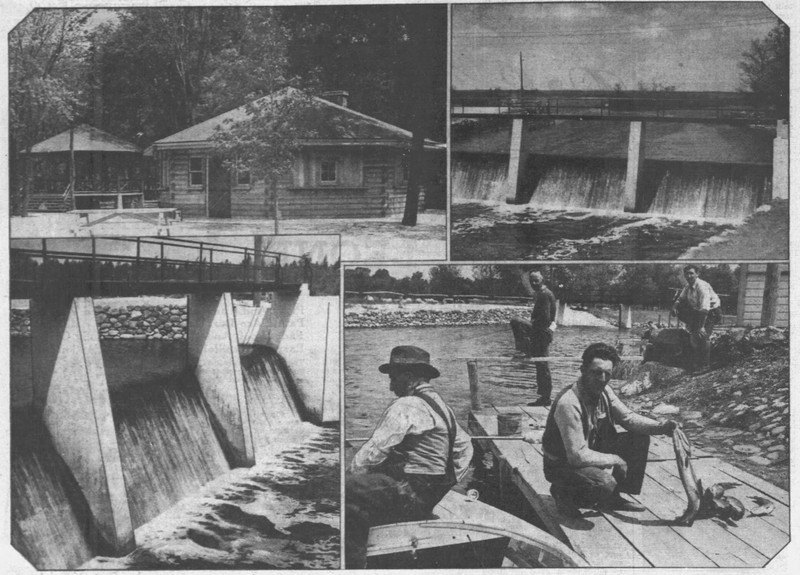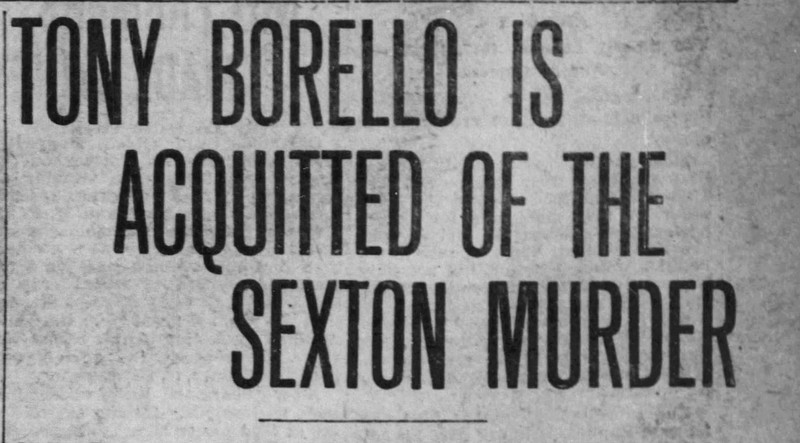The Sheboygan Marsh
Introduction
Text-to-speech Audio
This location has not always been the beautiful marsh that it is today. Thousands of years ago, as glaciers retreated, they carved out a 100 foot basin. This basin would become a large lake and a center of Native American meetings and trade. Slowly, the lake filled with debris and peat, transforming into a marshland that is home to a diverse population of wildlife.
Images
Lake Sheboygan
.jpg)
Sheboygan Marsh today

Marsh dam and buildings 1941

Sheboygan Press 5/18/1917

Backstory and Context
Text-to-speech Audio
Located in the northwest corner of the county and covering over 13,000 acres, the marsh is a natural wonder created by the retreat of glaciers that once covered the area nearly 15,000 years ago. As the glaciers moved through the area, their crushing weight carved out a 100 foot deep basin. When temperatures started to rise and the ice began to melt, slowly the basin filled with water creating a massive lake. As the millennia ticked by, decaying plant matter collected in the basin, turning the large glacial lake into a peat-filled marsh.
The marsh has always been a sanctuary for a diverse population of plants and animals. Archaeological excavations, and simply pure luck, have turned up remains of a wide variety of animals. The marsh at one point or another has been home to the dire wolf, mastodons, mammoths, musk oxen, giant beavers, barren ground caribou, and big horned bison.
Filled with rich and diverse animal life, as well as, ideal soil conditions for growing, it may come as no surprise that the marsh was home to numerous Native American tribes over the centuries. The area was an attractive meeting point for at least five tribes; the Potawatomi, Chippewa, Ottawa, Ho-Chunk, and Menominee. One of the areas surrounding the marsh that is the most well-known is the Henschel Farm. For more than 10,000 years, different tribes have made that land home. The area even contains the oldest known and one of the most richly endowed “Red Ocher” burials in the entire state. When excavations were done, the burial was dated between 600 B.C. and 800 B.C. and finds included sea shells from the Atlantic Coast and copper from Michigan’s Upper Peninsula.
When the Henschel family, as well as many other immigrant families began arriving in the area, there were still a number of Native American villages surrounding the marsh. For decades, both immigrants and Native Americans co-existed, for the most part, peacefully, and in many cases, forming rather fond friendships. A great example of this is “Old Solomon” whose real name was Thunder Feather. He was perhaps one of the most well known and well liked Native American man in the area. He was also the last to leave Sheboygan County in 1883, moving to the reservation in Keshena, Wisconsin.
The marsh has always been an attractive prospect to all who encountered it; however, not everyone wanted to keep the marsh in its natural state. In 1869, Sheboygan businessman John Bertschy purchased the marsh land with dreams of turning it into rich farmland to sell. His vision was ambitious. He took $25,000 of his own money and another $25,000 from the state to widen the channel in the natural limestone ledge to drain water from the marsh. He would then dig a large ditch to funnel water to the drain. However, the ditch turned into a money pit and when bills went unpaid, creditors seized the land back.
Later in 1900, Alber G. and William Maurer had plans to drain the marsh as well. They hoped to use the natural marl in the marsh to make a high quality Portland cement. They were able to successfully drain the marsh, but securing additional ingredients to make the cement proved difficult and expensive. After three tough years, the pair gave up and again the marsh was abandoned.
By 1916, farmland prices were at an all time high with the United States’ entry into the First World War looming. Sheboygan Valley Land and Lime Company formed to turn the unused land into rich farmland and take advantage of the natural limestone deposits. They dug an additional 20 miles of drainage ditches ranging in depth from 6-20 feet deep. The drainage was successful, however it took until 1921 to complete, by which time the farmland boom prices crashed. Sheboygan Valley Land and Limestone Company filed for bankruptcy shortly after the digging was completed.
After multiple failed business ventures that left the marsh a dry and barren landscape, fire became a major issue. Between 1921 and 1927, the dried peat provided ample fuel for almost continual fires. Fire watch patrols inspected the area on a daily basis, but it was not enough to prevent them. At times fires were so large, an orange glow could be seen coming from the marsh at night.
In order to stop the fires, the idea of re-flooding the marsh gained momentum in 1927 spearheaded by Charles E. Broughton, editor and publisher of the Sheboygan Press. Broughton not only promoted the idea to fix the fire problem, but also saw the value in returning the marsh to its natural state. By 1933, a temporary dam was constructed to extinguish the flames. Continuing his push to create a natural marsh and park, Broughton purchased 80 acres of land and donated it to Sheboygan County. In his honor, the land is named Sheboygan Broughton Marsh Park. Shortly after his donation, the county acquired an additional 6,349 acres at foreclosure auctions for $17,646.
A year later, in 1938, the Works Progress Administration was enlisted to construct a permanent dam on site and the marsh quickly began to return to its natural state. In addition to the dam, other buildings were added to the park, though not by the WPA. The buildings included a concession stand/caretaker's home, a band stand, a boat rental office, and hunting storage lockers. The original concession stand is still on site in the parking lot of Three Guys and a Grill. FUN FACT: In 1938, on the opening day of duck hunting, the marsh was flooded with over 3,000 hunters!
One of the marsh’s most interesting and intriguing stories takes place in 1911 and involves the murder of a well known and well liked local man named John Sexton. After his children moved away and he unexpectedly became a widower, John made his home in a small log cabin near the current entrance to the Broughton Sheboygan Marsh Park. He spent his days foraging and collecting Native American artifacts, and documenting and studying the natural flora and fauna of the area. Though he lived alone, John was never short of visitors! He even formed a close friendship with local millionaire Matthais Gottfried. This friendship, however, is believed to be the cause of rumors that John’s cabin hid a large cache of money.
On the night of June 28, 1911, an Italian immigrant worker named Anthony Borello decided to find the supposed money that John Sexton had. That night Borello went to the cabin and in a heated brawl, stabbed Sexton multiple times and cut his throat. The next morning a neighbor found the lifeless body of John Sexton and a frantic manhunt ensued. On June 30th, the nearby quarry reported three of its immigrant workers missing, among them, Anthony Borello. After a search of Borello’s room, a watch belonging to Sexton was found. A few days later, $300 worth of certificates of deposits in John Sexton’s name were reported being used in Chicago to purchase steam passage to Italy.
After nearly a year of leads and dead ends to locate Anthony Borello, a break was finally made when US agents located Borello in 1912 on a farm just outside Naples, Italy. Two Sheboygan County agents were sent to Italy to extradite Anthony back for a murder trial. After multiple attempts, the agents were sent back empty handed as the Italian government refused to have Borello tried in America. Instead, they held a trial in Italian courts.
Here is where things really become interesting. If you have ever read about this story before, you may have read that Mr. Borello was tried and convicted in Italy and sentenced to 17 years in prison for his crime. This information, which originally appeared in Bill Wangemann’s book Sheboygan Tales of the Tragic and Bizzare, may not be the true ending. Through our own research, we discovered an article that ran in The Sheboygan Press in 1917. The paper quotes an answer to an inquiry by the press to the State Department. The State Department reported that Mr. Borello was incarcerated for 6 years following a trial, but he was in fact acquitted of the murder charge and released in 1917.
Since its resurrection in 1938, the marsh has continued to be loved, cherished, and even added to. In 2006, the marsh was designated a Wisconsin Land Legacy Place, really securing it as a place to be preserved and protected. In 2009, construction of the 80-foot tower was completed, costing $500,000. The tower, the tallest in the state, provides visitors with breathtaking views of the marsh. The most recent undertaking at the marsh is the construction of the Kohler Center for Marsh Education. The project is being spearheaded by The Friends of the Sheboygan Marsh. The new building will replace the semi-tractor trailer that had been being used for area students to learn about the marsh’s unique ecosystem. Ground was broken on the $2.3 million project in July of 2020. The facility is aimed at fostering conservatism through education.
Sources
Sheboygan Broughton Marsh Park & Campground, Sheboygan County Wisconsin. Accessed November 3rd, 2023. https://www.sheboygancounty.com/departments/departments-f-q/planning-and-conservation/facilities/parks/sheboygan-marsh-park-campground.
Klein, Gary C. How a newspaper editor helped save this Sheboygan County marsh from being turned to farmland: Throwback, The Sheboygan Press. May 11th, 2023. Accessed November 3rd, 2023. https://www.sheboyganpress.com/story/news/2023/05/11/sheboygan-county-broughton-marsh-almost-farmland/70200256007/.
Clark, Brian E. Broughton Marsh is a hidden jewel in Sheboygan County, Milwaukee Journal Sentinel. June 9th, 2017. Accessed November 3rd, 2023. https://www.jsonline.com/story/travel/wisconsin/weekend-getaway/2017/06/09/broughton-marsh-hidden-jewel-sheboygan-county/372566001/.
